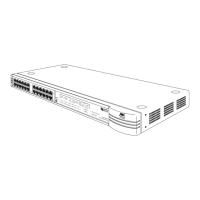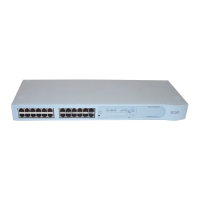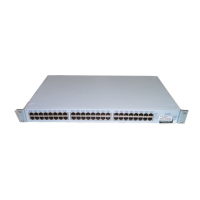182 C
HAPTER
7: F
AST
IP
What is FastIP?
FastIP is a system that allows you to use the IEEE 802.1Q VLAN standard
to reduce the load on routing devices when VLANs are implemented on
your network.
Endstations within different VLANs can only communicate using a routing
device; if there is a large amount of inter-VLAN traffic, the router can
become overloaded and network performance can be affected. FastIP
allows your endstations and Switch units to find secure short cuts for
inter-VLAN traffic that bypass the routing device altogether.
When using FastIP, you must have a routing device (router or Layer 3
switch) in your network. In addition, we recommend that:
■
All your Switch units have FastIP enabled. Note, however, that the
FastIP system does work if:
■
The Switch nearest to the routing device has FastIP enabled
■
The rest of the Switch units use a shared Switch Database for all
VLANs (the SuperStack II Switch 1000, Switch 3000 and Desktop
Switch units use this system). For more information about shared
Switch Databases, see
“FastIP and the Switch Database”
on
page 186
.
■
All your endstations support FastIP. For more information, refer to the
user documentation supplied with your endstations or the Network
Interface Card (NIC) of your endstations.
How FastIP Works
FastIP works as follows:
1
If an endstation A supports FastIP, it determines whether each data
packet is being sent to a local endstation (one in the same VLAN) or a
remote endstation (one in another VLAN).
2
If endstation A is about to send a data packet to a remote endstation B, it
sends a special NHRP (Next Hop Resolution Protocol) packet to endstation
B. This packet contains the MAC address and VLAN membership details
of endstation A.
3
The NHRP packet passes through the Switch units to the routing device,
and back through the Switch units to endstation B.
4
If endstation B supports FastIP, it records the MAC address and VLAN
membership of endstation A.
